
Увага! На сайті використовуються cookie файли.
The site uses cookie files
Даний сайт має вікове обмеження.
This site has age restrictions!
Я підтверджую, що мені, на жаль, давно виповнилося 18 років
Wines with low or zero alcohol content are taking the world by storm. It’s a hot trend — perhaps a little too hot. For all the buzz, the reality is that most products in this category still fall short of the quality needed to truly be called wine.
How are No / Low wines made?
Here’s a brief description of the dealcoholization methos.
Vacuum distillation: this method involves gently heating the wine under reduced pressure in vacuum, allowing alcohol to evaporate at lower temperatures (around 30–35°C). Aromatic compounds are often collected and reintroduced after alcohol removal to maintain the wine’s character.
Reverse osmosis: wine is passed through a semi-permeable membrane under high pressure, separating alcohol and water from flavour compounds. The alcohol is then removed from the separated mixture, and the remaining components are recombined.
Spinning cone column: utilizing centrifugal force in a cone-shaped column under vacuum conditions, this method separates volatile aroma compounds and alcohol at low temperatures. The aromas are preserved and reintroduced after alcohol removal, aiming to create a non-alcoholic wine that closely resembles its original counterpart.
Cold filtration (lyophilization): the wine is frozen and then subjected to a vacuum, causing the alcohol and some water to sublimate. This technique is less common and primarily used for specific applications.
Each of these methods aims to reduce or eliminate alcohol content while preserving the sensory qualities of the wine. The choice of technique depends on the desired flavour profile, cost considerations, and technological capabilities.
Re-introducing or recombination of flavours is supposed to retain much of the wine’s original profile upon removal of alcohol by the above mentioned methods. In fact, some winemakers have to use additives to help imitate or restore flavors lost during dealcoholization, while the original aromas often can’t be fully recovered. Natural flavourings (often derived from fruits, herbs, or spices), acids, sweeteners, glycerol, tannins and oak extracts — all these components can be found in dealcoholized wines. Mostly, in my opinion, to no success.
Arrested fermentation is another method, widely used for producing low alcohol, but not completely dealcoholized, wines. Fermentation is intentionally stopped before completion, resulting in a wine with lower alcohol content. This method often leads to sweeter wines due to residual sugars and which sometimes lack the complexity of fully fermented wines.
Sometimes — but not always. In Germany, particularly in the Mosel region, the method of arrested fermentation has long been used to craft elegant, complex, world-renowned wines. So, to paraphrase the old saying: beauty lies in the hands of the maker.
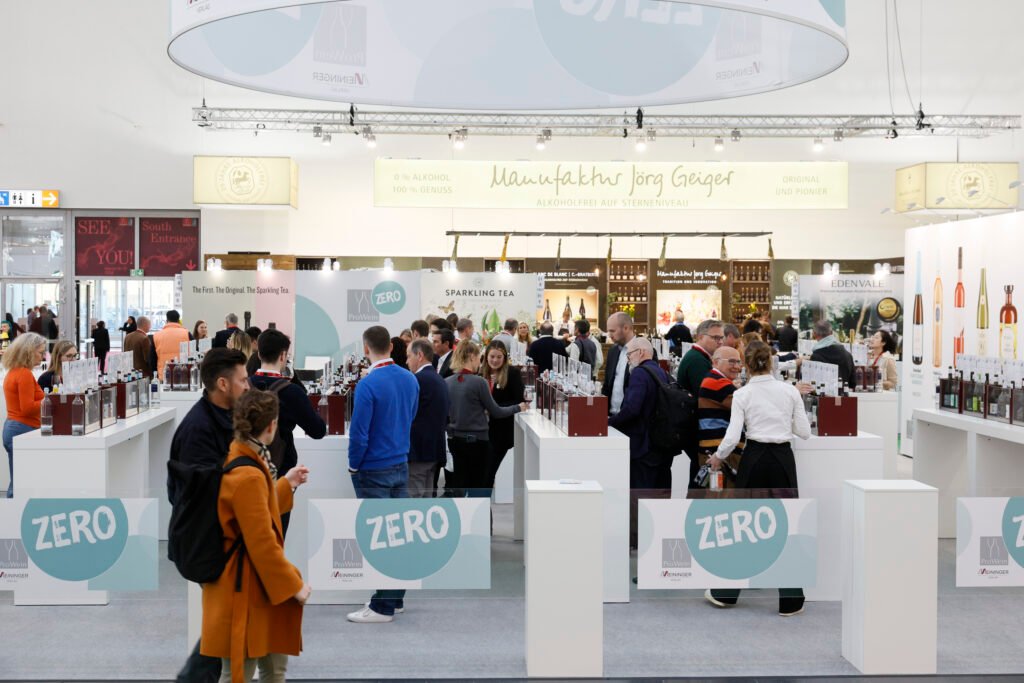
At the recent ProWein fair, I wandered through the ZERO zone, hoping to discover a few standout samples. After all, having a high-quality non-alcoholic alternative to regular wine would be a genuine win. As I tasted various samples, I paid close attention to other tasters’ reactions. I happened to overhear a brief exchange between two winemakers from the Pfalz region: “Average rating, if you ask me? Somewhere between bad and very bad,” remarked one. “I don’t understand how we’re supposed to live with this,” the other concluded.
A pleasant young woman smiled at me just as I began tasting: “Have you already been to the sparkling wines? Maybe we can divide the zones — I’ll tell you what to pay attention to among the whites, and you can give me tips on the sparklings?” The woman turned out to be the founder of a new project called Zero Wine Club, named Jenny Klein. Jenny is a true enthusiast of the zero-alcohol trend. Her vision with Zero Wine Club is to build a culture around alcohol-free wine — one that centers on enjoyment, free choice, and mindful, modern living.
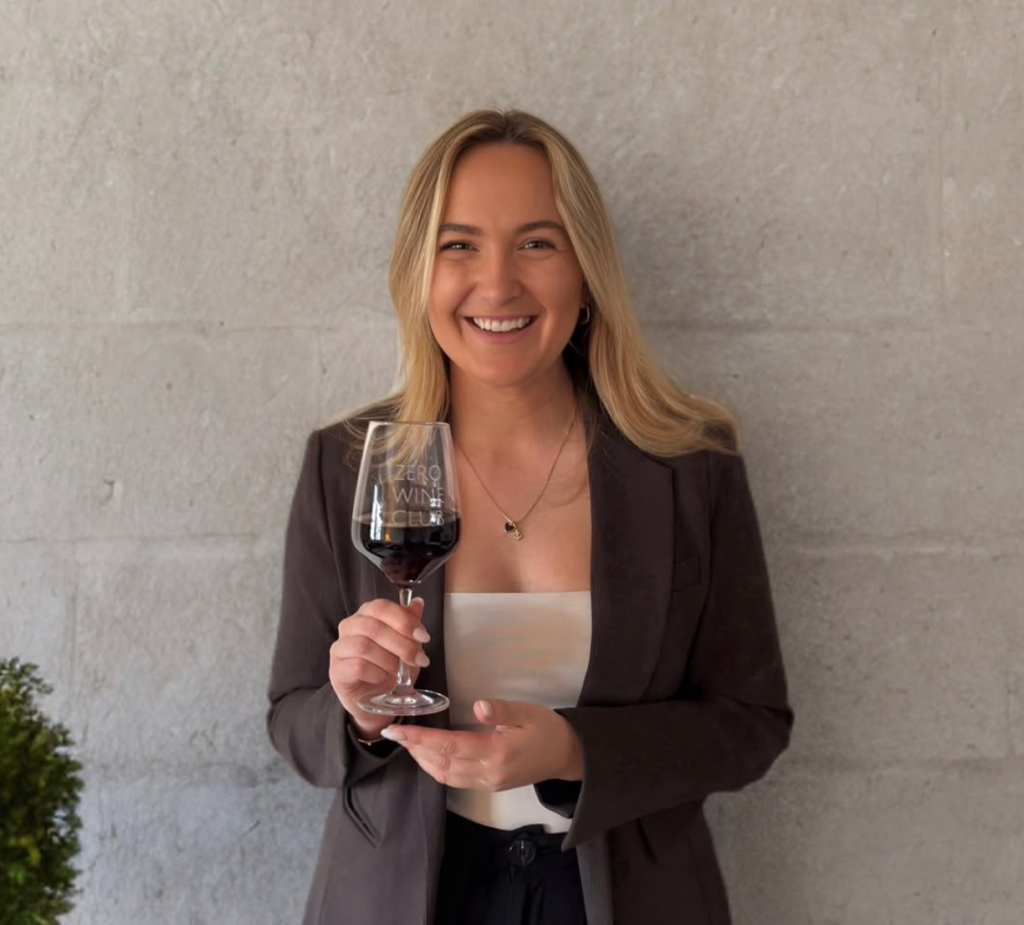
Jenny proudly calls herself a flexidrinker. What does that mean? “Think of it like a flexitarian, but in the world of wine: someone who happily drinks both alcoholic and alcohol-free wines — depending on the mood, the moment, and the company.”
Before launching her project, Jenny tasted over 250 non-alcoholic wines to understand whether they really had a future: “For me, non-alcoholic doesn’t mean it’s somehow lesser,” says the founder of Zero Wine Club. “I’ve noticed that many people still approach alcohol-free wine with a certain skepticism — they assume it can’t possibly taste as good. And I want to change that. I want to show how many truly wonderful alcohol-free wines already exist — and help people discover them. It’s a bit like what happened with non-alcoholic beer or plant-based alternatives: it took time to find the good ones, and even longer for them to be taken seriously. I want to give people the same freedom of choice when it comes to wine — to enjoy what suits their moment, without compromise. And I want alcohol-free drinking to become a brand in itself — something normalized, present at events, in restaurants, and as a natural part of everyday life.”
Unlike Jenny, I haven’t yet sampled 250 No/Low wines — but I’ve certainly spent a lot of time looking for a decent alcohol-free bottle in Germany, across different price points. Germany produces outstanding wines, and you can easily buy a very drinkable Riesling (with alcohol) for just €5 to €7. So my disappointment was hard to contain when I opened an 18-euro bottle of alcohol-free Riesling that turned out to be a complete letdown. It was a clear case of price having no relation to quality.
Still, a couple of non-alcoholic wines I tasted left a very pleasant impression:
Dr. Lo Riesling Alkoholfrei — a non-alcoholic Riesling from the renowned and highly respected Mosel-based winery Dr. Loosen, made using estate-grown grapes. This Riesling is fruity, fresh, mineral, and elegant, with a beautifully balanced sweetness and acidity.
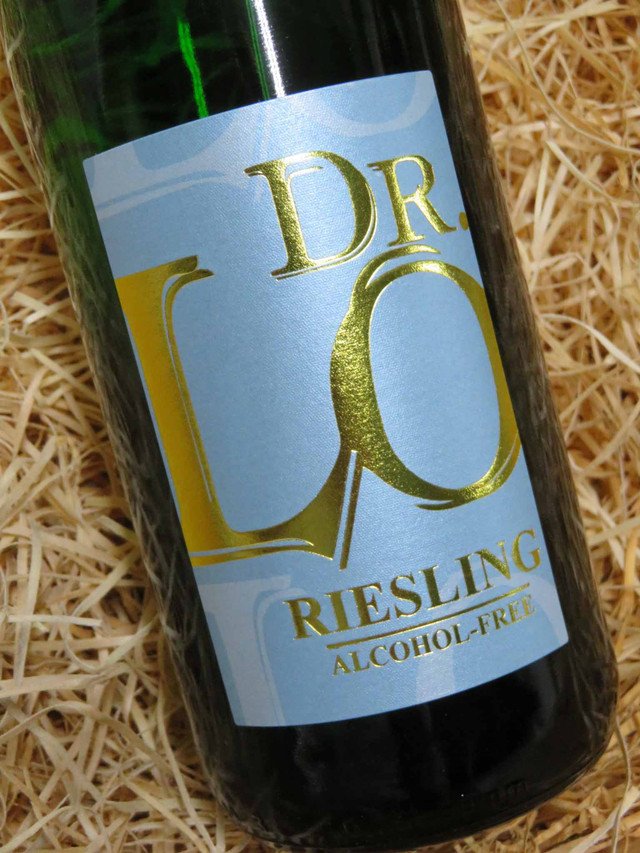
The second standout was Kolonne Null Edition Axel Pauly Riesling Alcohol-Free Wine 2020, a collaboration between Axel Pauly — a young and remarkably talented Mosel winemaker affectionately nicknamed the “Barbarossa of the Mosel” — and Kolonne Null, Germany’s most prominent and innovative alcohol-free wine brand. This Riesling genuinely surprised me with its distinctive Pauly signature: pronounced minerality, vivid yet well-integrated acidity, and refined elegance in both aroma and palate. A vibrant nose of green apple, fresh lemon, and juicy stone fruit is enhanced by a spicy undertone and a subtle creamy hint — a truly impressive zero-alcohol wine.
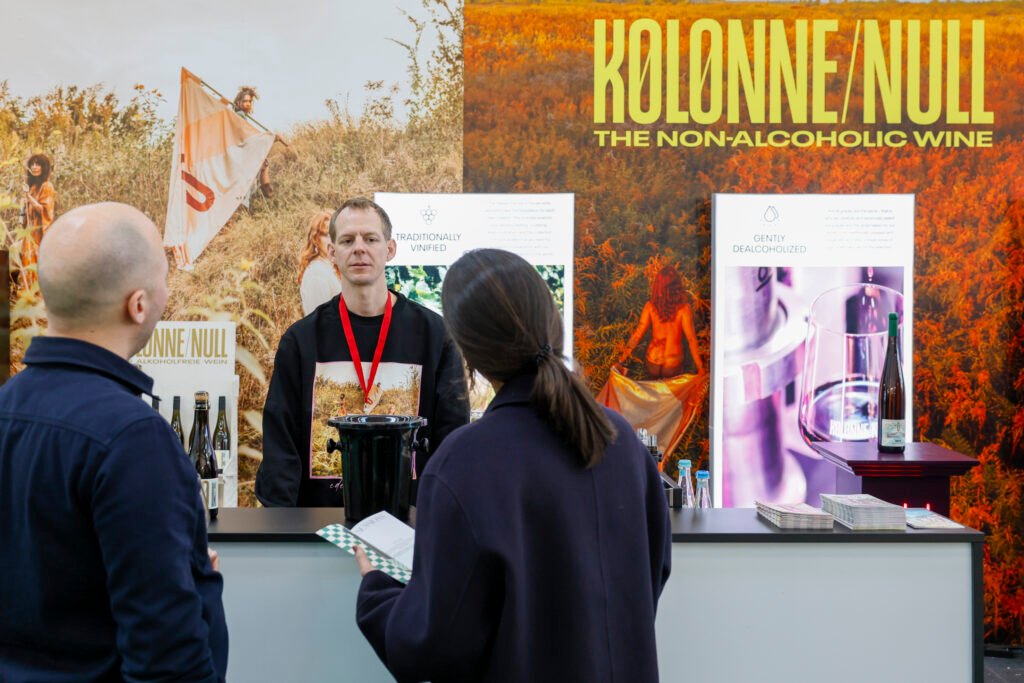
The global consumption trend is raising concerns among winemakers: younger consumers are increasingly disengaged from wine. Roughly one-third of Gen Z prefers no- or low-alcohol drinks. In Germany alone, according to wine market analysis conducted by NielsenIQ for the German Wine Institute (DWI), the consumption of non-alcoholic wines rose by 86% in 2024 compared to the previous year.
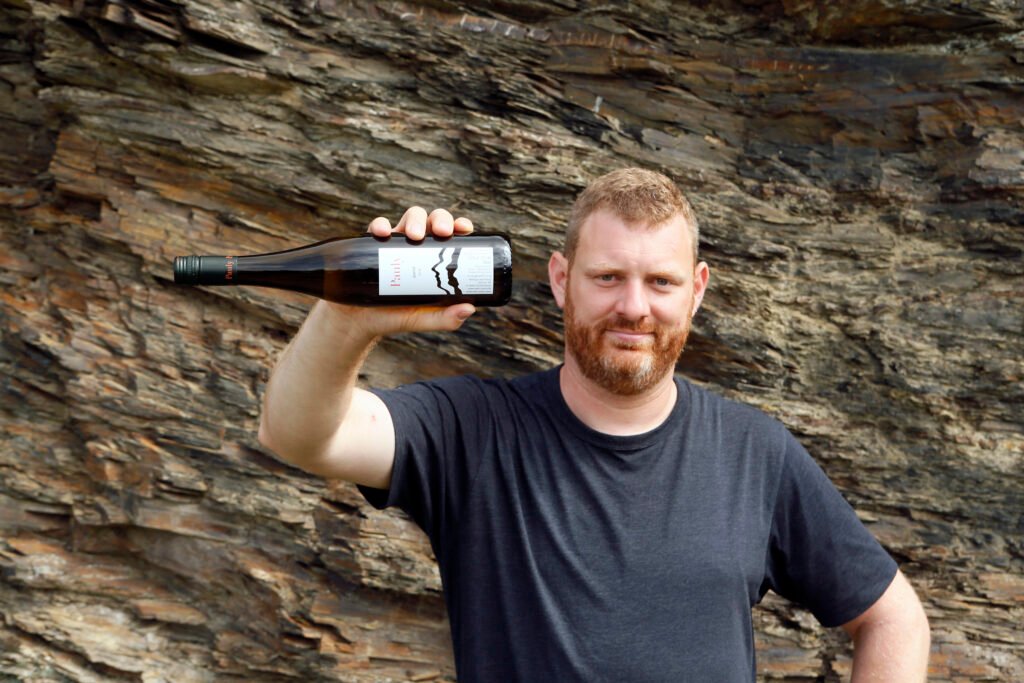
At this point, it’s difficult to say whether this is a conscious lifestyle choice by consumers or the result of sustained messaging around health and wellness. Either way, the wine industry must respond to this shift in preferences among the new generation.
So, what is the expert perspective on this growing and seemingly unstoppable trend?
Robert Joseph, a prominent British wine critic and industry consultant, as well as a co-founder of a winemaking company le Grand Noir, has expressed nuanced views on the trend of no- and low-alcohol wines. Joseph highlights the growing consumer interest in non-alcoholic options, driven by health considerations and changing social norms. He urges the wine industry to respond empathetically to this demand, rather than dismissing it. In his piece “10 Reasons Why People Want Zero-Alcohol Beverages,” published in his Devil’s Advocate column for Meininger’s International, he outlines factors contributing to this trend, including medical reasons, such as taking antibiotics or pregnancy, metabolism issues, strict employment rules, giving up on alcohol “after a history of abusing it”, and other important personal reasons. “So, what is on offer for a wine drinker, looking for an adult beverage, possibly — but not necessarily — to enjoy with food? In other words, for people seeking an alternative to water, soft drinks or fruit juice, almost all of which are sweet. Why shouldn’t they have a glass of something that will give them pleasure?” Robert Joseph encourages producers to have understanding of such consumer needs — and to do their best to find quality solution — his company Le Grand Noir also offers a 0,0% range: a dry white blend (80% Grenache Blanc 10% Chardonnay 10% Viognier) and a dry red blend (50% Pinot Noir 50% Grenache).
In his column Mr. Joseph says that No / Low does not exactly need to be as good as wine: “Most of us as rarely get to drink the ‘finest classic wine’ as most meat eaters get to enjoy wagyu steaks. But, more importantly, anyone making a non-alcoholic adult drink is not competing with full-strength beer, spirits or wine. The competition they face is Coca Cola, orange juice, water – and each other.”

Yevgenia Nikolaichuk, WSET4, project lead for the wine category at the commercial division of the Silpo retail chain, notes that non-alcoholic wines are beginning to break into the premium segment as well: “This spring, my colleagues and I attended all the major wine industry events — Barcelona Wine Week, Wine Paris, ProWein, Vinitaly — and around 40% of what we tasted fell into the No/Low category. One trend that stood out was the emergence of premium wines in the non-alcoholic segment. These are wines with added value: made from organically grown grapes, sometimes aged in oak, typically priced slightly above the mid-range. They are much more interesting from an organoleptic perspective, far less sweetened — and genuinely enjoyable to drink.”
Among other global trends, Yevgenia also points to the growing popularity of wines with noticeably lower alcohol content:
“These wines are made using special yeast strains that consume more sugar while producing significantly less alcohol. The result is light, high-quality dry wines with alcohol levels of just 8–9%.”
What’s the current situation with non-alcoholic wine in Ukraine?
Yevgenia Nikolaichuk observes that over the past year, consumption of both still and sparkling wines has declined: “There are a few reasons for this. Some people take antidepressants, which cannot be mixed with alcohol. Others prefer to stay sober due to the constant air raids alerts — they want to remain in control. Some increased their alcohol intake at the beginning of the war, but are now scaling it back. And some who used to buy three bottles of wine a week now opt for two bottles of regular wine and one bottle of non-alcoholic.”
To help meet these changing needs, Silpo chain has created dedicated non-alcoholic displays to make navigation easier for customers: “We’ve gathered everything from this segment in one clearly marked area,” says Yevgenia.
So why has consumption of still and sparkling wines dropped most sharply in Ukraine?
Yevgenia believes the reason is largely emotional: “Wine is about celebration, relaxation, and good moods. And these aren’t the easiest times for celebration in Ukraine. Non-alcoholic wine can help recreate that festive feeling without the risk of losing control — your favourite drink is still in the glass. Water just doesn’t have the same effect.”
Is non-alcoholic wine produced in Ukraine?
“Before investing in expensive equipment for non-alcoholic wine production, certain legislative changes had to be made to legalise this category,” explains Svitlana Tsybak, CEO of Beykush Winery and Head of the Association of Craft Winemakers of Ukraine. “I was part of the working group that focused on aligning Ukrainian wine laws with European standards. This included regulations on non-alcoholic wines. The work began back in 2020 — it was quite a complex process.”
In August 2024, the Parliament (Verkhovna Rada) of Ukraine passed Law No. 9139, harmonising national wine legislation with EU regulations. For the first time, this law defines the production framework for both non-alcoholic and partially dealcoholised wines in Ukraine.
Specifically, it clearly distinguishes between “non-alcoholic” and “low-alcohol” beverages; establishes standards for dealcoholisation processes and permitted methods; requires transparent labelling — including the actual alcohol content and the method of alcohol removal; introduces quality standards for non-alcoholic wines and mechanisms for monitoring compliance.
The law also sets certain limitations — notably, it prohibits dealcoholisation of wines with geographical indications (GIs) and bans the simultaneous dealcoholisation and sweetening of grape must.
Will Ukrainian non-alcoholic wines hit the market any time soon? That remains both a question and a challenge — for producers and consumers alike. Global trends are certainly relevant here, but Ukraine has always found its own path and written its own story. Let’s see how this one unfolds.
⇒ Join our social networks ⇒ Optimistic D+ editors will take this as a compliment.
⇒ Every like is taken as a toast!
03.09.2024